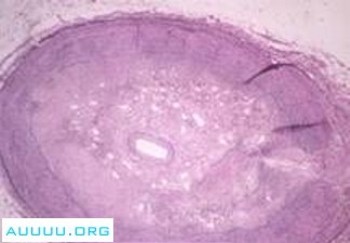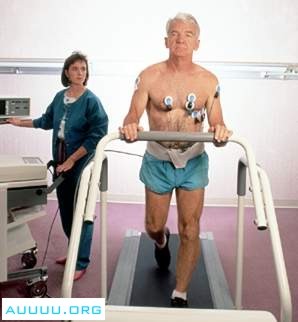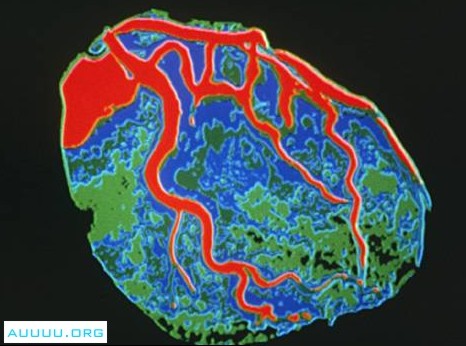|

Atherosclerosis, or the narrowing of arteries due to the buildup of plaque along the inner lining, is the single most lethal condition in the United States. The plaques consist principally of fat and cholesterol deposits but also contain blood platelets, decomposing muscle cells, and other tissue. Since plaques usually reduce blood flow in major arteries, their presence represents a serious health risk, leading to heart disease, stroke, and the disruption of kidney and intestinal function. Poor circulation, also a result of plaque buildup, impairs movement of the limbs. Fragments of the plaques may break off and travel through the bloodstream to obstruct smaller vessels. The plaques unfortunately become larger and more numerous with age, especially in people with high levels of cholesterol in their diet and bloodstream.
Coronary heart disease, the most common type of heart disease in most industrialized countries, is responsible for over 515,000 deaths in the United States yearly. It is caused by atherosclerosis, the buildup of fatty material called plaque on the inside of the coronary arteries. Over the course of many years, this plaque narrows the arteries so that less blood can flow through them and less oxygen reaches the heart muscle.
The most common symptom of coronary heart disease is angina pectoris, a squeezing chest pain that may radiate to the neck, jaw, back, and left arm. Angina pectoris is a signal that blood flow to the heart muscle falls short when extra work is required from the heart muscle. An attack of angina is typically triggered by exercise or other physical exertion, or by strong emotions. Coronary heart disease can also lead to a heart attack, which usually develops when a blood clot forms at the site of a plaque and severely reduces or completely stops the flow of blood to a part of the heart. In a heart attack, also known as myocardial infarction, part of the heart muscle dies because it is deprived of oxygen. This oxygen deprivation also causes the crushing chest pain characteristic of a heart attack. Other symptoms of a heart attack include nausea, vomiting, and profuse sweating. About one-third of heart attacks are fatal, but patients who seek immediate medical attention when symptoms of a heart attack develop have a good chance of surviving.
One of the primary risk factors for coronary heart disease is the presence of a high level of a fatty substance called cholesterol in the bloodstream. High blood cholesterol is typically the result of a diet that is high in cholesterol and saturated fat, although some genetic disorders also cause the problem. Other risk factors include smoking, high blood pressure, diabetes mellitus, obesity, and a sedentary lifestyle. Coronary heart disease was once thought to affect primarily men, but this is not the case. The disease affects an equal number of men and women, although women tend to develop the disease later in life than men do.
Coronary heart disease cannot be cured, but it can often be controlled with a combination of lifestyle changes and medications. Patients with coronary heart disease are encouraged to quit smoking, exercise regularly, and eat a low-fat diet. Doctors may prescribe a drug such as lovastatin, simvastatin, or pravastatin to help lower blood cholesterol. A wide variety of medications can help relieve angina, including nitroglycerin, beta blockers, and calcium channel blockers. Doctors may recommend that some patients take a daily dose of aspirin, which helps prevent heart attacks by interfering with platelets, tiny blood cells that play a critical role in blood clotting.
Atherosclerosis, or the narrowing of arteries due to the buildup of plaque along the inner lining, is the single most lethal condition in the United States. The plaques consist principally of fat and cholesterol deposits but also contain blood platelets, decomposing muscle cells, and other tissue. Since plaques usually reduce blood flow in major arteries, their presence represents a serious health risk, leading to heart disease, stroke, and the disruption of kidney and intestinal function. Poor circulation, also a result of plaque buildup, impairs movement of the limbs. Fragments of the plaques may break off and travel through the bloodstream to obstruct smaller vessels. The plaques unfortunately become larger and more numerous with age, especially in people with high levels of cholesterol in their diet and bloodstream.

The stress test, also called an exercise electrocardiogram, measures the heart rate of a person during exercise and identifies any abnormal changes in heart function. Such changes may indicate the presence of coronary or arterial disease.

Coronary angiography, the X-ray examination of the heart after the injection of a radiopaque dye or contrast medium, is used to detect the presence and extent of coronary disease. Areas blocked by atherosclerotic plaque appear as dark spots that interrupt the path of an artery. This angiogram shows a blockage in the coronary artery along the upper surface of the heart.

One of the most prevalent causes of heart attack is the buildup of plaque in the arteries leading to the heart. Balloon angioplasty is a common surgical treatment for this condition. If successful, the procedure eliminates the need for more involved surgery such as coronary bypass.
In some patients, lifestyle changes and medication may not be sufficient to control angina. These patients may undergo coronary artery bypass surgery or percutaneous transluminal coronary angioplasty (PTCA) to help relieve their symptoms. In bypass surgery, a length of blood vessel is removed from elsewhere in the patient’s body—usually a vein from the leg or an artery from the wrist. The surgeon sews one end to the aorta and the other end to the coronary artery, creating a conduit for blood to flow that bypasses the narrowed segment. Surgeons today commonly use an artery from the inside of the chest wall because bypasses made from this artery are very durable. In PTCA, commonly referred to as balloon angioplasty, a deflated balloon is threaded through the patient’s coronary arteries to the site of a blockage. The balloon is then inflated, crushing the plaque and restoring the normal flow of blood through the artery.
|